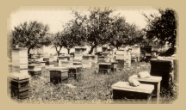| Notes |
- Burial: In 1834, seventeen years after the death of Mr. Curran, a committee of gentlemen was formed in Dublin, to provide for the removal of his mortal remains to Ireland. Prospect Cemetery, Glasnevin, Dublin, was the locality selected for his last earthly resting-place.The consent of his son (and biographer) was obtained, a faculty permitting the removal of the body from Paddington Church was procured, the exhumed body was removed to the house of Alderman Sir Matthew Wood, in George Street, it was thence taken to Dublin, where it was received by Mr. W. H. Curran and one of the Committee, was temporarily deposited in the private Mausoleumn at Lyons, the residence of Lord Cloncurry, the friend of Curran, and was finally removed to a grave at Glasnevin. The attendants were Messrs. W. Curran, John Finlay, Con. Lyne, and Andrew Carew O'Dwyer the last-named being the person with whom originated the proposition for restoring the remains to their native soil. This re-interment was private. The pageantry of a national procession which was suggested, was respectfully and judiciously declined by Mr. W. II:. Curran. A massive sarcophagus in Glasnevin contains the remains of Ireland's great orator and patriot, and the inscription, far more expressive than a laboured epitaph, is simply the one word C U R R A N. There is a monument to Curran in St. Patrick's Cathedral, Dublin and a bust by Moore, on a sarcophagus. It is copied from Lawrence's portrait, and, Mr. Davis says, " is the finest monument, so simply made, I ever saw. It is most like him in his glorified funeral, declaring that of all, he was "the only incorrupted and faithful," adding, " There is a loveliness and a heartiness over me when I think of this great man whom we have lost. Charles, there never was so honest an Irishman. His very soul was republican Irish. Look to his history in 1778, in 1782, in 1790 at the Union at all times in all places." He suggested that the Irish of all classes in London should be invited to attend the funeral, each wearing a shamrock, and that " on his coffin should be laid a broken harp and a wreath of shamrock." The funeral was private.
From: THE LIFE OF THE RIGHT HONORABLE JOHN PHILPOT CURRAN LATE MASTER OF THE ROLLS IN IRELAND BY HIS SON WILLIAM HENRY CURRAN IWITH ADDITIONS AND NOTES BY R. SHELTON MACKENZIE, D.C.L. NEW YORK: W. J. WIDDLETON, PUBLISHER.
|











